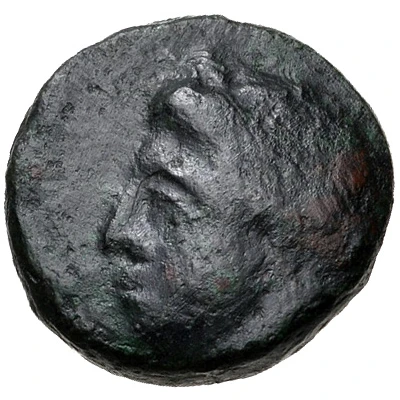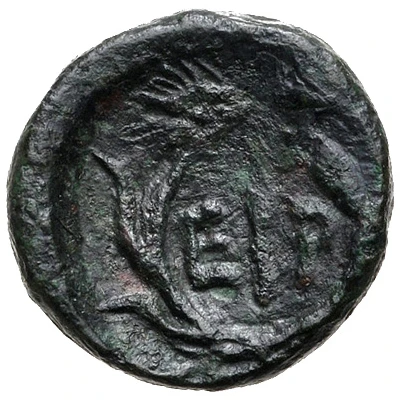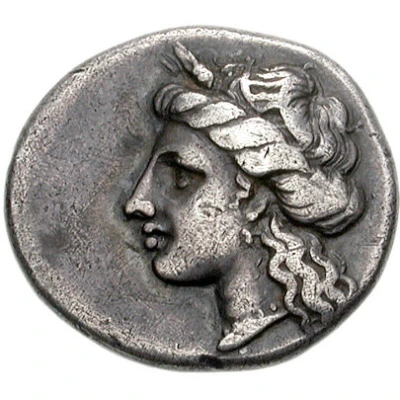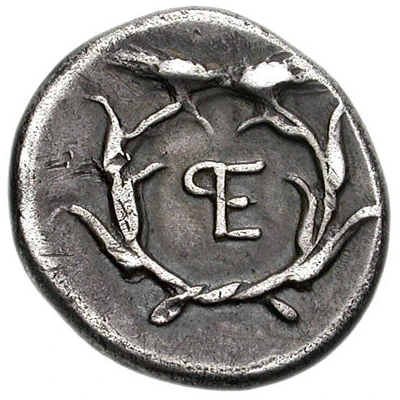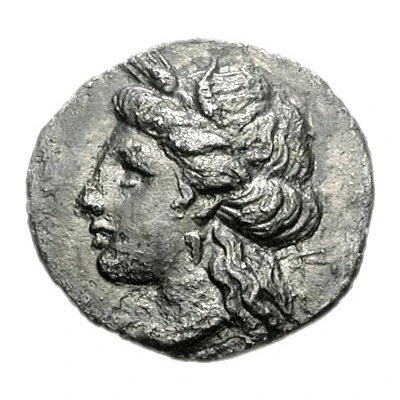
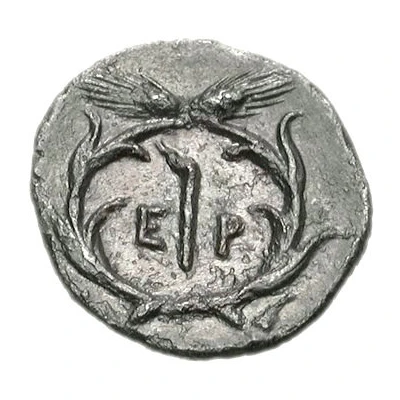

© Classical Numismatic Group, Inc.
Obol 360 BC - 310 BC
| Silver | 0.82 g | - |
| Issuer | Hermione (Argolis) |
|---|---|
| Type | Standard circulation coin |
| Years | 360 BC - 310 BC |
| Value | Obol (⅙) |
| Currency | Drachm |
| Composition | Silver |
| Weight | 0.82 g |
| Shape | Round (irregular) |
| Technique | Hammered |
| Demonetized | Yes |
| Updated | 2024-10-09 |
| Numista | N#144504 |
|---|---|
| Rarity index | 100% |
Reverse
Torch flanked by E-P. All within wreath of grain ears
Script: Greek
Lettering: ΕΡ
Interesting fact
The Obol coin from Hermione (Argolis) was used as a form of currency in ancient Greece, specifically in the city-state of Argos, during the 4th century BC. It's interesting to note that the Obol was the smallest denomination of currency in ancient Greece, and it was equivalent to one-sixth of a drachma, which was the standard unit of currency at the time. This coin was made of silver and weighed only 0.82 grams, making it a very small and lightweight currency. Despite its small size, the Obol played an important role in the economy of ancient Greece, as it was widely used for everyday transactions and was a symbol of the wealth and power of the city-state of Argos.
